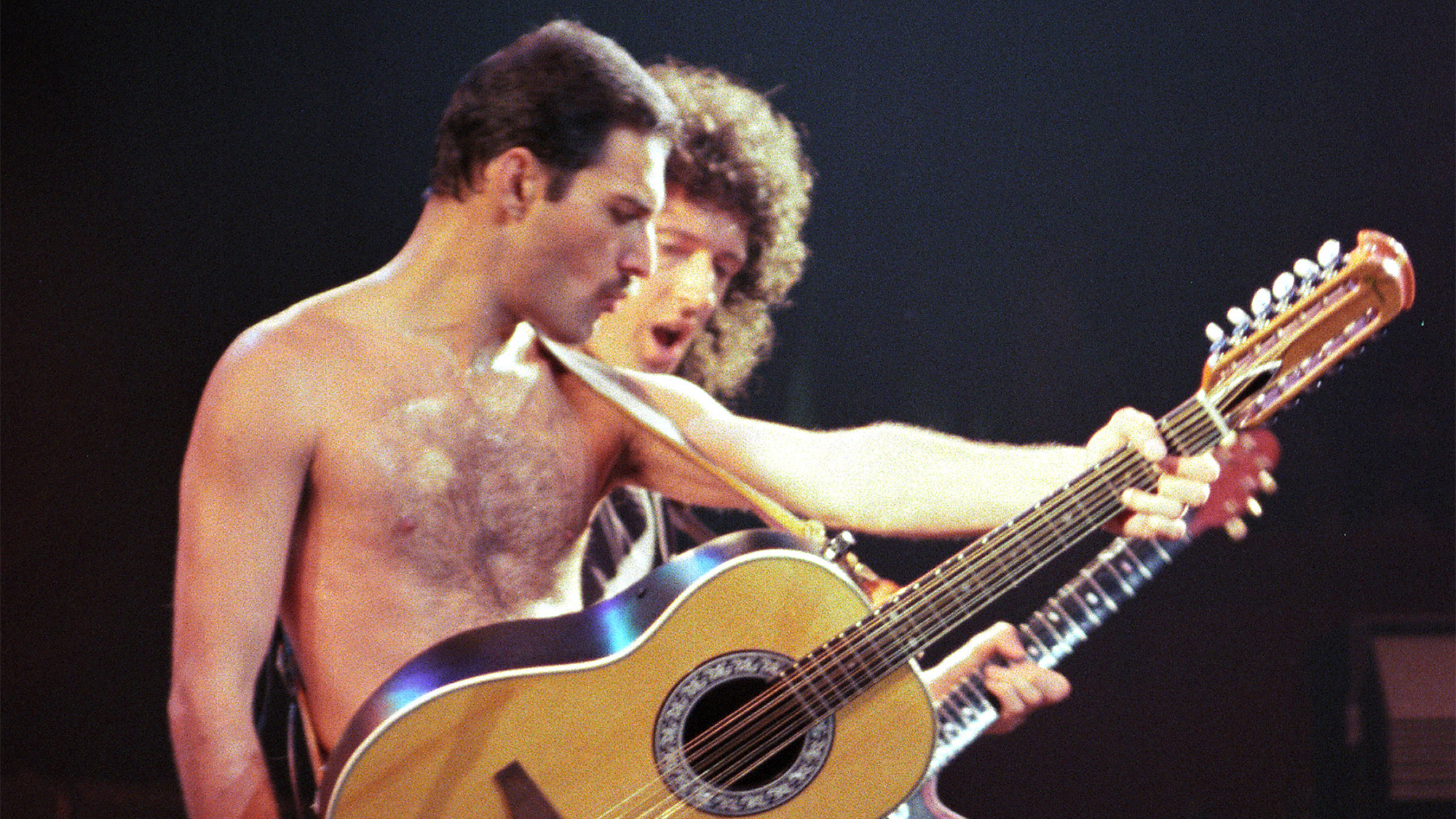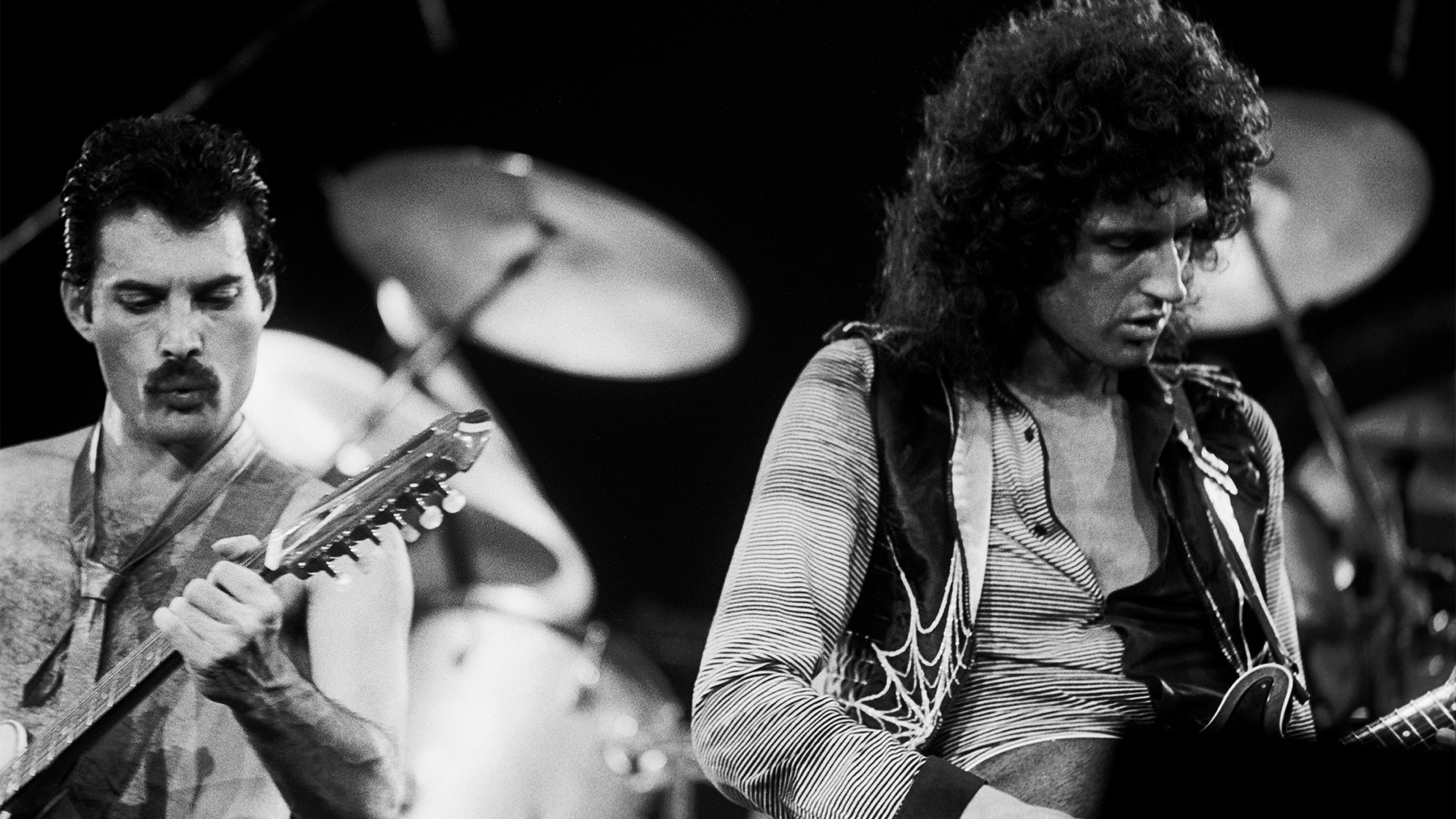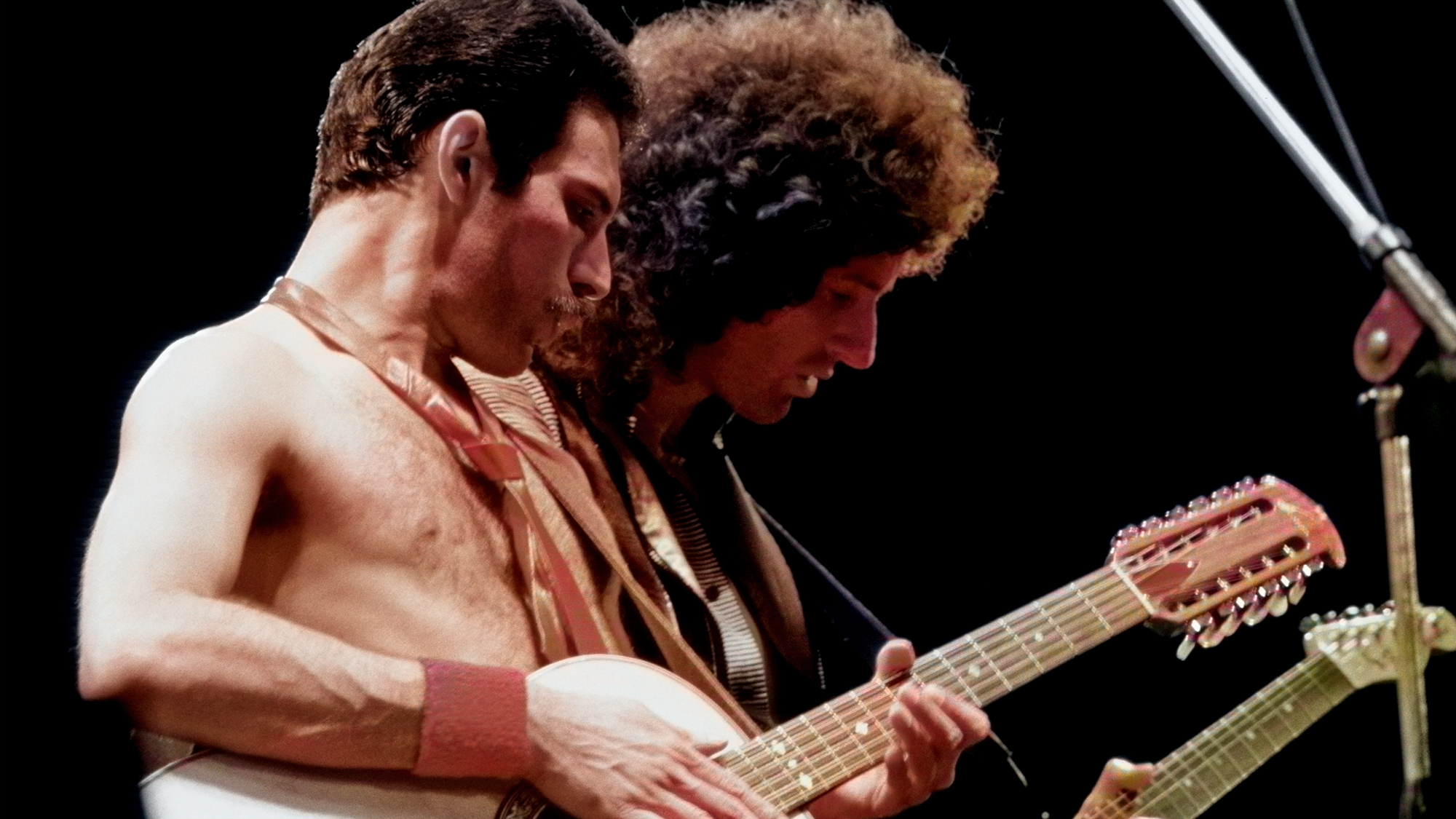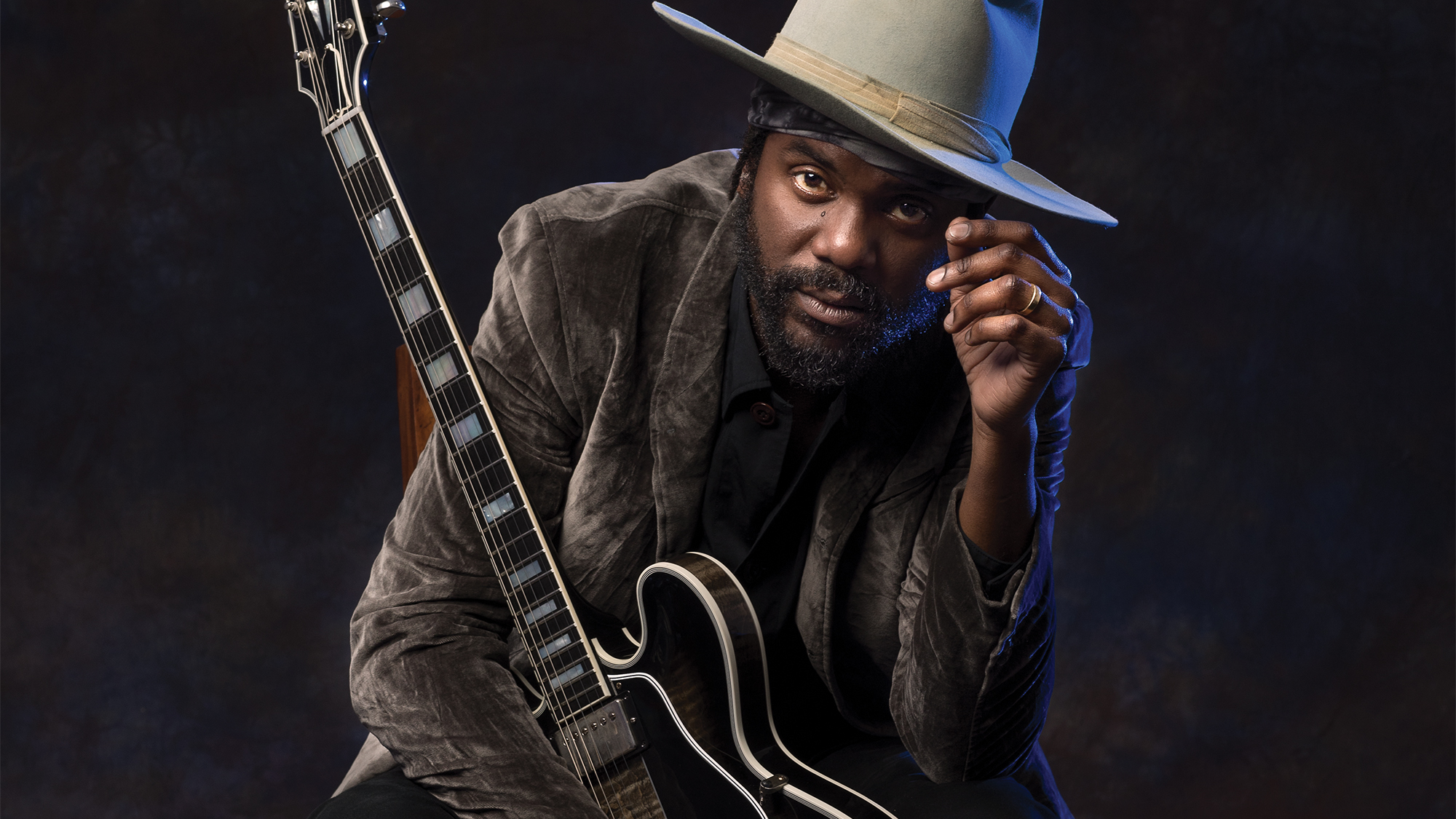“That rhythm guitar is Freddie. I don't think I played any of that.” Brian May said Freddie Mercury edged him out of this chart-topping Queen hit
John Lennon reportedly said the tune spurred him into recording again, resulting in his final album, 1980’s 'Double Fantasy'

Freddie Mercury may hold the record for history’s most profitable half hour in the bathtub.
In May 1979, as Queen were preparing to record The Game at Musicland Studios in Munich, Queen’s lead singer stepped into a bathtub in the Bayerischer Hof Hotel and emerged 30 minutes later with a new song fully formed: “Crazy Little Thing Called Love.”
Grabbing an acoustic guitar, he quickly worked out the tune in his hotel room.
“’Crazy Little Thing Called Love’ took me five or 10 minutes,” he confirmed to Melody Maker in 1981. “I did that on the guitar, which I can't play for nuts, and in one way it was quite a good thing because I was restricted, knowing only a few chords. It's a good discipline, because I simply had to write within a small framework.”
As quickly as Mercury wrote it, Queen got to work tracking it in the studio.
“We recorded that song, really, six months before the rest of the album,” drummer Roger Taylor explained in a 1989 interview for In the Studio With Redbeard.
“It took half an hour to record. I remember he came in the studio. He says, ‘My dear, I just wrote this in the bath,’ and he did. He'd just been lying in the bath, and there it was. It was very simple, very easy, and it had a great fresh sound to it.”
Get The Pick Newsletter
All the latest guitar news, interviews, lessons, reviews, deals and more, direct to your inbox!
As it turned out, everyone was present for the session except Brian May, who had been at the studio late the night before. In his absence, Mercury strapped on an acoustic guitar to lead Taylor and bass guitar player John Deacon through the song.
“It always happens: If I go out for a couple of hours, they create something else,” May humorously griped to In the Studio with Redbeard in 1989.
“I came back and they'd already put down the backing track. Roger just had the live drums, Freddie had played acoustic guitar — ‘cause that rhythm on there is Freddie. I don't think I played any of that.”
While he’s most often thought of as a singer and piano player, Mercury was also a talented guitarist. “Certainly in the early days he used the guitar as much as the piano to write songs,” May wrote in his Queen in 3D book.
May also notes that Mercury had solid rhythm chops, especially on acoustic.

“Freddie was really a good acoustic player. He was very modest about it, but he could really play the acoustic guitar very well in an inimitable, very frenetic kind of style.
“I can still his kind of horny fingers hitting the strings — Freddie doing his Elvis, very successfully.”
As May revealed in a February 2008 interview with Guitar and Bass magazine, Mercury even attempted to record the song’s guitar solo.
“He did the original solo on ‘Crazy Little Thing,’” the guitarist confirmed, “on a version that got lost, and I had to redo it. He was very good in a particular style of his own.”
While Mercury’s guitar solo is absent from the recording, we do have May’s, which is widely considered one of his best. Remarkably, it doesn’t feature his homemade Red Special.
In fact, by his own account, May was railroaded into using a Telecaster by producer Reinhold Mack, who decided that classic model was best suited to the song’s vintage rock-and-roll style.
“I said, ‘Well, I can make my guitar sound like a Telecaster, like those old rock and roll records,’” May told In the Studio with Redbeard. “And he said, ‘If you want it to sound like a Telecaster, play a Telecaster.’

May did so, calling it “one of the few times I ever played something that wasn't my regular guitar.” Taylor, who both plays and collects guitars, delivered a rarity from his vault.
“I used one of Roger's really old, beat-up, natural-wood Telecasters,” May told Guitar Player in our January 1983 issue “I got bludgeoned into playing it. That was Mack's idea.
“I said, ‘I don't want to play a Telecaster. It basically doesn't suit my style.’ But ‘Crazy Little Thing Called Love’ was such a period piece, it seemed to need that period sound.
“So I said, ‘Okay, Mack, if you want to set it up, I'll play it.’ He put it through a Mesa/Boogie, which is an amplifier I don't get on with at all. It just doesn't suit me. I tried it, and it sounded okay.”
It may have sounded “okay” to May’s ears, but it was an absolute knock out to everyone else. May’s “Crazy Little Thing Called Love” solo is a stunning example of his ear for giving a song exactly what it needs — and in a style that has no equal in Queen’s catalog.
For that matter, it wasn’t the first time May had to fight over a solo. As he told Total Guitar, he had to push to convince Mercury to let him track a solo on Queen’s 1979 hit “Don’t Stop Me Now.”
With "Crazy Little Thing Called Love" completed, the band took a break from making The Game, during which time they performed at the Saarbrücken Open Air Festival in Germany that August.
Meanwhile, their label, eager for something new to release, took “Crazy Little Thing Called Love” for an advance single, releasing it in the U.K. in October 1979. The song quickly reached number two, leading the group to launch a short tour — dubbed, appropriately, Crazy — where they played a number of theater dates in the U.K. from November through December.
By December, “Crazy Little Thing Called Love” had been released in the U.S., where it quickly began moving up the charts. Queen were back at work on The Game when it hit the top of the charts, becoming the group's first U.S. single to do so.
Roger Taylor recalled the strangeness of hearing the song had reached peak position in the States while they were still recording The Game in Germany.
“It seemed unreal because we were in the other side of the world, and we hadn't even finished the album, which the single was from,” he told In the Studio With Redbeard. “We were still working on it. And we thought, We’re off to a good start here!”
“Crazy Little Thing Called Love” would continue to pay dividends as a radio staple and popular cover tune. But for Taylor, the best of these rewards came in the form of a compliment from no less than John Lennon.
“I remember actually one of the things which made me very proud,” Taylor said, “was that John Lennon said in some article... ‘I heard the Queen record and it made me wanna get back in the studio.’”
The former Beatle would soon do just that, recording what would be his final album, Double Fantasy, in 1980.
“And I thought, Wow, fantastic!” Taylor remarked. “To have actually had any little dent on somebody like Lennon is great.”
Christopher Scapelliti is editor-in-chief of GuitarPlayer.com and the former editor of Guitar Player, the world’s longest-running guitar magazine, founded in 1967. In his extensive career, he has authored in-depth interviews with such guitarists as Pete Townshend, Slash, Billy Corgan, Jack White, Elvis Costello and Todd Rundgren, and audio professionals including Beatles engineers Geoff Emerick and Ken Scott. He is the co-author of Guitar Aficionado: The Collections: The Most Famous, Rare, and Valuable Guitars in the World, a founding editor of Guitar Aficionado magazine, and a former editor with Guitar World, Guitar for the Practicing Musician and Maximum Guitar. Apart from guitars, he maintains a collection of more than 30 vintage analog synthesizers.
